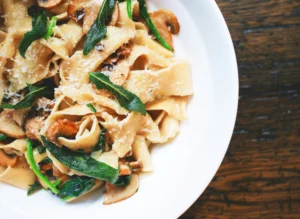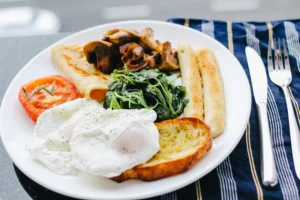Few things on this earth are as delicious to discuss as the cuisines of Italy and Spain. They both come from places rich in tradition, with unique flavours and various dishes that make them shine through gastronomy. In this blog, I am going to uncover the details of both cuisines—their history, staple ingredients, traditional dishes, and cultural importance—to finally end the sweeping argument as to who wins –Italian food vs Spanish Food.
History Of Italian And Spanish Cooking
Italian Cuisine: A Legacy of Simplicity and Flavor

Historically, Italian Cuisine can be traced back to ancient Rome, where a sweet deal of simple yet high-quality ingredients was quite popular. Over centuries, it has since evolved by borrowing from its neighbours and various empires that conquered it. Italian cooking showcases simplicity at its most basic, allowing each ingredient to shine in the dish. Italian food is regional – with each area, from the fertile plains of Tuscany to the lush coastlines of Sicily, offering its special ingredients, resulting in a wide variety of unique recipes and tastes.
Spanish Cuisine: A Blend of Cultures

Spain: A tapestry of cultures has influenced Spanish Cuisine from the days of Arabic, Jewish and Roman occupation. The variety of ingredients and cooking methods stemmed from the geographical diversity of its mounts, coasts, and cities. The communal styles of dining and tapas culture (where Spaniards love to share their food) mean you can sample a bit of everything in one sitting. Flamenco is music that goes along with popular food and Spanish Cuisine, but Spanish food is remarkable on its own due to its wide range of seafood offerings and robust flavours of spices.
Staple Ingredients
Italian Staples
Italian cooking uses some of the world’s key staple ingredients to create carbs – different preparations of these four ingredients make up many classic Italian dishes:
Olive oil: Commonly used in cooking and as a daily dressing, olive oil is a staple of Italian Cuisine
Pasta: When you hear pasta, automatically, you think of Italy as well. Spaghetti, penne…
Tomatoes are a must-have when making sauces or a lovely summer salad.
Parmesan, mozzarella and ricotta are only a few cheeses used in Italian Cuisine.
Fresh Herbs: Assume one or all: Basil, Oregano, Rosemary, Thyme
Spanish Staples
There are also certain key ingredients in Spanish Cuisine that you absolutely would not find in other regional cuisines:
Olive Oil: Like the Italians, olive oil is an important part of Spanish cooking (of course!).
Garlic is the go-to for depth in any dish.
Seafood: Given Spain’s coastline, seafood plays a pivotal role in Spanish cooking.
Paprika – is used in a lot of Spanish dishes for that smoky flavour
Beans and lentils -great for hearty stews/soups.
Popular Dishes
Italian Favorites
Pizza Margherita – A Neopolitan classic, borrowing its colours from the Italian flag of red (tomatoes), white (mozzarella) and green (basil)
Lasagne: Sheets of pasta, topped with layers of delicious meat sauce, béchamel, and cheese, then baked.
Risotto: An Italian rice dish cooked in broth to a creamy consistency with cheese, wine, and other ingredients such as vegetables or meat.
Tiramisu: A popular coffee-flavoured Italian dessert made of layers of ladyfinger biscuits soaked in coffee and layered with a whipped mixture of sugar, eggs, and mascarpone cheese.
Spanish Classics
Paella: a saffron rice cooked with seafood, chicken or rabbit
Tapas– Small plates options such as patatas bravas, chorizo and gambas al ajillo.
Gazpacho: This cold tomato soup tastes like my ideal hot day in a bottle.
Churros -crispy churro doughnuts served with chocolate dipping sauce
Cultural Significance
Italian Food Culture
Food and family traditions run deep in the heart of Italian cooking. Dinner is a time of uniting with family and friends, sharing stories and long days at work. It is also common for Italians to serve lunch over several hours, for example, with antipasti and perhaps a tiny pasta dish served one at a time until dolce. Holidays and festivals also include their dishes, which adds to the diversity of Italy’s food culture.
Spanish Food Culture
The Spanish embrace eating as a communal event, from tapas’ snack-every-night tradition to the paella feast’s grand pageantry. The experience of a friendly get-together is only complete with food, and one can often find friends and family members sitting at a table for hours chatting while eating various delicious meals. It is a diverse food culture. Spanish food culture is as dead as it gets from its history to the all-encompassing local applications.
Winner: Italian vs Spanish Cooking Verdict
Deciding between Italian and Spanish Cuisine is very hard as both bring their taste variety to their cooking. Some things to ponder over:
Flavor Profiles
The quintessence of Italian Cuisine is “ingredient simplicity”, in which high-quality, fresh ingredients are prepared and combined as a lone or minimal number of raw ingredients. Italians, on the other hand, have very soft and balanced bits.
Spanish Food is strong, Exotic, full of spice, and made for sharing. Sharing is also a part of Spanish food, which is about the strength of flavours.
Variety and Versatility
Italian Cuisine: All dishes come from as many regions as possible, which could have their specialities. It is versatile and can be used in various ways, such as pasta, pizza, or risotto.
Spanish Cuisine (as diverse as its regions – many have dishes unlike anywhere else) The tapas culture alone offers endless ways to explore small plates.
Cultural Experience
Italian Food in Italy—Dining Italian is all about intimacy and family. The idea is to sit back, eat the meal, and enjoy your company.
The Famous Spanish Cuisine: In Spain, eating food is a social gathering where various dishes are served in a party atmosphere.
The Culinary Adventures of My Italian Life
When I travel through Italy, one of the things that impresses me most is how deeply dedicated this culture is to purity and tradition. I experienced this in Rome when I dined at a family-run trattoria, where they made the pasta fresh and slowly simmered the sauce. With every mouthful of the carbonara, it almost felt like I was reliving the days when cooking was an art filled with love.
I even took a conveyor in Tuscany, where I was taught how to make risotto. Stir the rice slowly and add the broth a little at a time, he said again. Be patient and take care. The resulting dish is creamy and flavoured, highlighting the clean flavours of Italian Cuisine.
Exploring Spanish Flavors
Curated quite differently in Spain, I took a tapa tour in Barcelona and ate my way from jamón ibérico to patatas bravas. Dish after dish, bite after bite, the flavours were complex and communal dining was warm.
The Seafood paella I had in Valencia is a top-three meal of all time for me. Highly entertaining was the live show of the chef preparing it in a huge pan over open flames. It made sense, the freshness of the seafood coming together with saffron and rice done right—the spirit of Spain in a bowl.
Conclusion: The Final Dish
In the final analysis, whether you prefer Italian or Spanish food is a matter of personal taste. Both boast heavenly gastronomy and exquisite tastes that will leave you spellbound. Our love of Italian and Spanish dishes is clear, and these two are truly worthy of these accolades, whether that is the wonderful simplicity (and often more elegance) of Italy or the bold flavours of Spanish tradition.
So, why choose? Why not get the best of both worlds and enjoy incredible flavours from Italian and Spanish cuisines? Enjoy, and as we say in Spanish, Maya Koo!
